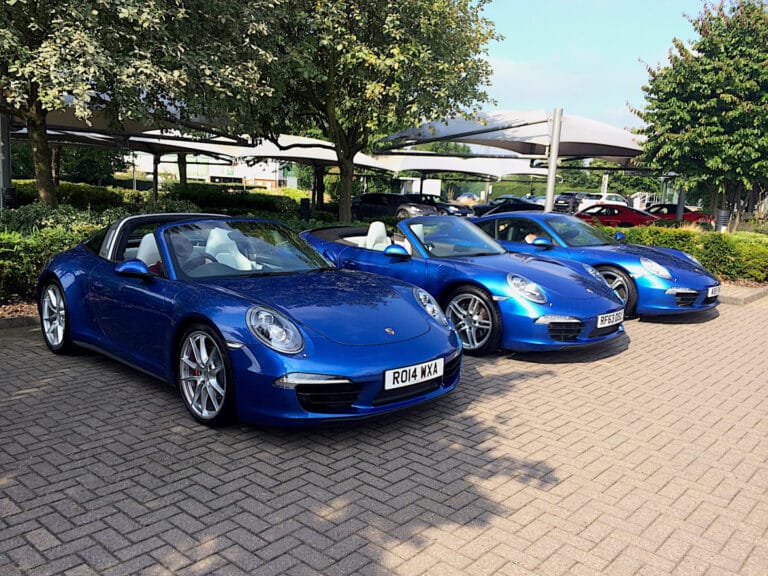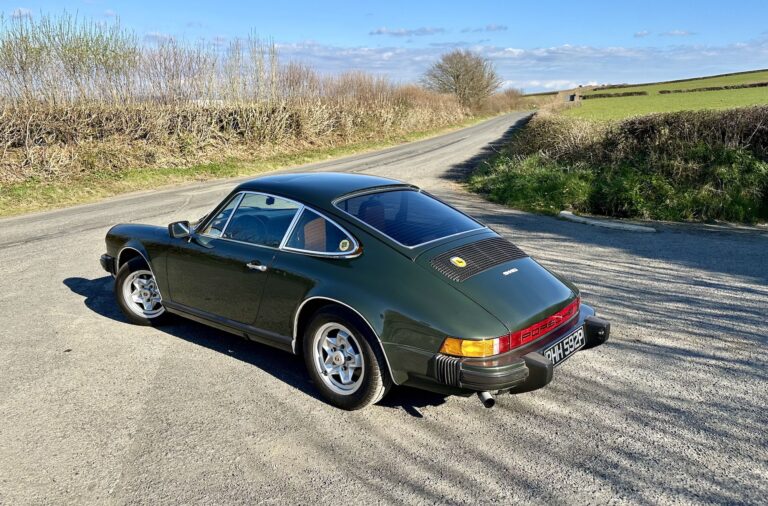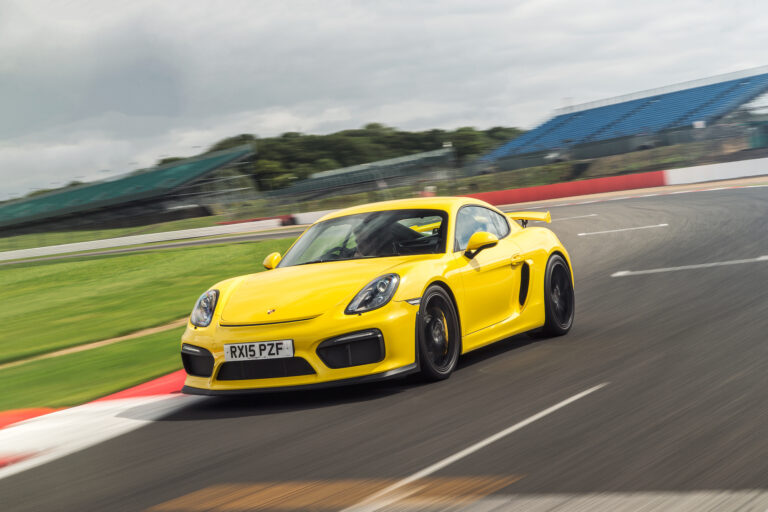Porsche 991.1 Carrera buying guide
The 991.1 Carrera offers a modern 911 experience in a more affordable package. 9WERKS presents 9 rules to follow when buying one
On sale from 2011 to 2015, the 991.1 was the final Carrera with a naturally aspirated engine. In retrospect, the move to forced induction wasn’t such a seismic shift for the 911 as water cooling in 1998. Even so, these cars sit at a crossroads, combining modern comfort and technology with old-school throttle response and a searing flat-six soundtrack. Priced from around £50,000, they retain a particular appeal for many Porsche enthusiasts and prove a popular search in the 9WERKS Marketplace.
Here’s our nine-step guide to buying a 991.1 Carrera or Carrera S, with advice from Greig Daly at RPM Technik and Jamie Tyler at Paragon Porsche.
1. Check behind the bumper
Let’s start at the front of the car. The engine radiators and air conditioning condensers are located behind the bumper, where they are vulnerable to impact damage from stones and road debris. In the autumn and winter months, the 991.1’s large front air intakes can also fill up with leaves and dirt, potentially clogging one of the cooling fans and causing the engine to overheat. Radiators, condensers and fans generally can’t be repaired and won’t be cheap to replace, so check their condition carefully. It’s a basic first step.
Categories
2. Get the 9A1 engine checked
Moving to the rear, 991.1 Carrera engines have proved generally reliable, with no trace of the failures that afflicted the 991.1 GT3. Issues can include faulty crank sensors and coil packs, which can cause the engine to cut out or misfire, along with stuck/corroded valves in the optional Sports exhaust (PSE). Owners have also reported issues with valves and sensors in the cooling system, which should activate a dashboard warning light.
3. Seek out stamps and good history
Speaking of paperwork, a comprehensive service history is vital. “The 991.1 Carrera should be serviced every two years or 20,000 miles,” notes Jamie. “Make sure any work was done by an official Porsche dealer or recognised independent specialist. These can be complicated cars so it’s vital whoever has worked on them knows what they are doing and has the right equipment and tooling.”
Greig adds: “Consumables such as tyres, clutches and brake discs or pads can be quite costly, so check how long until they need refreshing. Having them all replaced at once means a reasonably big bill.”
4. Have the ECU checked
Rather like trawling through the call history of a mobile phone, the 991’s electronic brain can reveal a litany of indiscretions. “The ECU stores all kinds of useful information, most notably over-revs for cars with manual gearboxes,” says Greig. “There is also hidden data to ensure the car’s mileage hasn’t been tampered with. A specialist will need to assist with this task, but it’s very important.”
5. Inspect the 991.1’s suspension
The front suspension is an area to inspect carefully, with worn bushes, tired top mounts and leaking dampers all reported by owners. Listen for creaking or knocking noises on the move. Porsche Active Drivetrain Mounts (PADMs), which stabilise the engine to enhance handling and ride comfort, can also fail over time. Check for scored or seized brake discs and pads, too.
As with any used Porsche, a proper geometry set-up is essential to make the car drive as Weissach intended – doubly so for the Carrera S with its rear axle steering. Always test-drive a car before you buy. If it doesn’t feel right, it probably isn’t.
6. Check for accident damage or poor repairs
The 991.1 is far friendlier to drive than 911s of old, but some have still suffered accident damage. “A basic check for panel alignment and colour match is a great start,” reckons Greig. “Most 991s have had their front end repainted for stone chips, which is nothing to worry about, but ensuring there’s nothing more sinister hidden is a must. You need to get the car on a ramp to check underneath the wheelarch liners and undertrays.”
Jamie concurs, saying: “Get right under the skin of the car to check chassis numbers and all the correct stickers are in the right places. Sometimes a car may be repaired well enough to look good on top, but can be a horror underneath.”
7. Ensure the right tyres are fitted
With at least 350hp to play with, the right rubber is essential – and cheap tyres suggest the previous owner has scrimped on maintenance elsewhere. Equally, some low-mileage cars have old tyres that still have plenty of tread, but are past their best.
“You’d be surprised at how many people fit non-branded tyres to these cars,” Jamie warns. “Check all the tyres are Porsche N-rated and no more than six years old.” The ‘DOT date’ when the tyres were manufactured is displayed on the rubber. For instance, a DOT of 1814 means a tyre was made in the 18th week of 2014.
8. Buy from the best
Avoid auction websites and buy your car from a respected Porsche specialist such as Paragon or RPM Technik. “It will be fully inspected and warranted, which takes away a lot of worry,” explains Greig. Check out the 9WERKS Marketplace for more than 70 Porsches for sale, supplied only by the UK’s most reputable dealers.
9. Pick the right 991.1 model
Finally, you need to find the right 991.1 model for you. Your initial choice is between the 350hp 3.4-litre Carrera or 400hp 3.8 Carrera S. Budget permitting, we prefer the S, which is notably punchier in the mid-range, helped by its extra 50Nm of torque. Then there’s the conundrum of Coupe, Cabriolet or Targa. “Each of them has a good following,” says Greig. “The Coupe has the lowest kerb weight and is the sharpest to drive. The open cars have a more relaxed ‘grand tourer’ nature.”
Jamie adds: “Colour and specification can be crucial for desirability and future resale value. Typically, you can’t go wrong buying a silver, black or grey car, although there’ll always be someone who wants something different.”
Greig says many 991.1 Carreras that RPM Technik services or sells had plenty of options from new, while modifications such as sportier suspension and exhausts aren’t uncommon. “Provided they are from premium suppliers, buyers tend to appreciate them,” he explains. Desirable factory-fit extras on the 991.1 Carrera include parking sensors, heated seats, the Sport Design steering wheel and the Bose or Burmester sound systems.
Perhaps the most significant option is the PDK transmission. A manual will always be the purist’s choice, but the notchy seven-speeder in the 991.1 isn’t one of Porsche’s finest. On the flip side, the twin-clutch ’box is more complex and expensive to fix if problems arise. All things being equal, we reckon the manual transmission suits the 3.4 Carrera, while the semi-automatic PDK seems perfectly aligned with the 3.8 S.























